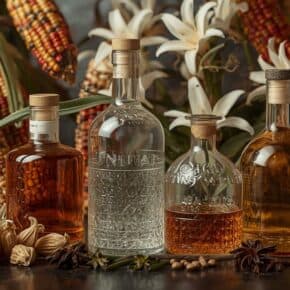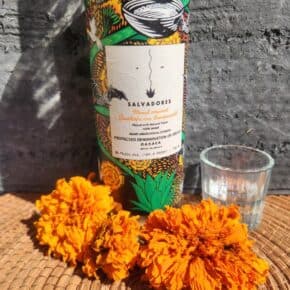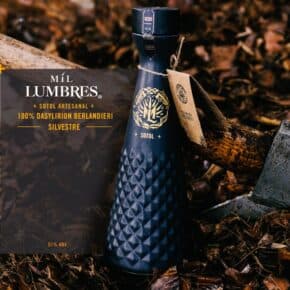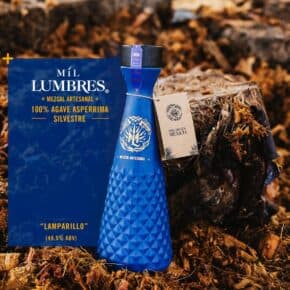What do you think of when you think of Mexico? For most people, the country is indelibly associated with tequila–the only distinctively Mexican product that can be found around the world. When it comes to Mexico and Mexican liquor, agave spirits definitely dominate the popular imagination.
But the craft spirit revival and the ascendancy of mezcal has also inspired distillers and entrepreneurs to look beyond agave. So we’re seeing a renewed interest in traditional spirits such as charanda as well as creative thinking along the lines of: What if gin? But Mexican? What follows is a brief tour of the landscape of Mexican craft spirits, accompanied by links to deeper dives into every significant category.
Mexican Gin
Mexico has incredible botanical diversity, so it makes sense that Mexican gin is becoming a thing. Because gin can be made from various base spirits and may incorporate infinite combinations of botanicals, we see a lot of creativity and diversity in the gin space–particularly in Mexico, which isn’t hidebound to an existing regional gin tradition.
That said, Mexican gin can be divided into several commonly recognized categories, including ginebra seca Mexicana, an interpretation of London dry gin that includes a mix of classic and local botanicals. This style uses a neutral base spirit, allowing the botanicals to shine. A variation on this theme are gins that may include a classic ingredient (typically imported juniper) but put the real emphasis on Mexican botanicals. Example: Gin Katun, which is proofed with cenote water or Granicera, which is made by Taller Astrafilia. (This in-depth article on that Mexico City-based liquor cooperative is worth a read.)
Another trend we’re seeing is ginebra Mexicana destilada, featuring a base spirit with a distinct profile. Example: Abrojo Gin, which is distilled from re-milled bagaso in a palenque; Mezcal MG, which is essentially a pechuga made with gin botanicals; or Gintol, which has a sotol base.
Mexican Rum
Mexico is one of the world’s top producers of sugar. The crop is farmed in about half the country’s states. With all this sugar, it’s no surprise that Mexico also produces a fair amount of rum. But somehow Mexico is not particularly known as a “rum-producing,” nation, and imported Bacardi remains the most popular rum on the national market.
So why isn’t Mexican rum better known? One answer is that tequila’s wild popularity overshadows every other beverage produced in Mexico. But Mexican rum’s relative obscurity is also an issue of nomenclature–rum is “hidden” under a variety of regional names.
Although the Spanish word for rum is ron, Mexicans tend to associate “ron” with Carribean-style rum. Traditional Mexican rum is more commonly known as aguardiente de caña, which may be shortened to aguardiente or caña. Compounding the confusion, aguardiente de caña also goes by regional names, such as zacualpan in Morelos and charanda in Michoacán. (Chinguirito is another word for Mexican rum that dates back to at least 1600.) But none of this will help you understand what to look for at the liquor store.
Note: Because sugarcane is typically cheaper to grow than agave, most craft rums are less expensive than a mezcal of equivalent quality. So this can be a thriftier starting point for exploring first class Mexican craft liquors.
Let’s take a look at some different types of Mexican rum:
Charanda
Charanda is a subcategory of Mexican rum with its own denomination of origin (DO), meaning it can only be produced in 16 municipalities in the state of Michoacán. These municipalities share common ground, quite literally. The region’s characteristic red soil, which is rich in volcanic minerals, is called “charanda” by the indigenous Purepecha people. Charanda the liquor can be made from cane juice, molasses, or piloncillo, but the raw ingredient must be from the Charanda DO. Example: Charanda Uruapan. Learn more about Charanda here.
Oaxacan Rum
A lot of particularly delicious rum is made in the remote mountains of Oaxaca, where it is traditionally known as aguardiente de caña. Oaxacan rum is typically agricole-style, meaning distilled from fermented cane juice–not molasses. Until about a decade ago, these spirits were little known outside of Oaxaca. But the tradition is very old, as exemplified by Cañada. Since the folks at Paranubes spawned a growing international interest in Oaxacan rum, the spirit has sparked economic development in mountain villages. Additional Examples: Tso’ok and Dakabend. These rums are all made by old-fashioned, labor intensive processes. Learn more about Oaxacan rum.
Habanero
Habanero is an aged aguardiente from the state of Tabasco. The cane alcohol is typically blended with a small quantity of sherry or other sweet wine to create a spirit with a brandy vibe. Habanero was fairly popular in the first half of the 20th century, but has faded into obscurity outside of Tabasco.
Mexican Vodka
Is Mexican vodka a thing? Sort of. Oso Negro is the most famous of Mexican vodkas and can be found on the dusty shelves of even the most remote tiendas. It’s made on a massive scale by Cuervo so can hardly be classified as a “craft” spirit. In terms of craft vodkas from Mexico, the playing field isn’t rowded. Luma, a Yucatecan brand, is marketing a vodka distilled from sugar cane and proofed with cenote water. Examples: A Baja distillery makes Drako, a corn-based vodka. Boker, which is also distilled from corn, bills itself as “the first Mexican vodka.” (Not if Oso Negro has anything to say about it.)
Mexican Whiskey
In the past decade, we’ve seen a growing interest in Mexican whiskey. At least 12 Mexican distilleries are producing whiskey, most made from local heirloom corn varieties.
An emphasis on terroir and regional or unique production techniques means that Mexican whiskeys are varied in flavor, echoing the diversity of mezcal. What do we mean by unique production techniques? Gran Maizal, which is from Merida, is made in a pot still and aged in a terra cotta amphora.
Many notable Mexican whiskeys are made from nixtamalized corn, meaning that dried kernels are steeped in cal (slaked lime). The alkaline solution triggers chemical transformations that alter the flavor and texture of the corn–which is why tortillas (which are made from nixtamilized corn) have such a vastly different flavor profile from corn on the cob–and one reason why these whiskeys don’t taste much like American bourbon. Examples: Abasolo, Maiz Nation, Gran Maizal, Sierra Norte.
More on Mexican whiskey.
Sotol
Sotol is distilled from the roasted hearts of the desert spoon plant, or Dasylirion, which is called sotol in Spanish. While there are at least 22 known species of Dasylirion, Dasylirion wheeleri is by far the most common used in sotol production. The liquor is traditionally derived from wild plants, but some producers are now experimenting with cultivation.
Dasylirion is native to the Chihuahuan desert, which spans northern Mexico and parts of the US Southwest. About 80% of the legal sotol on the market is produced in the state of Chihuahua. However, the denomination of origin (DO), established in 2002, allows production in Chihuahua, Durango, and Coahuila. Example sotol brands: Flor del Desierto, and Cardenxe. Learn more about sotol.
Liqueurs
Traditionally, aguardiente de caña has been mixed with local fruit and other flavorings to create liqueurs. These preparations can be known by the additive (like damiana) or regional names such as torito. In addition, Mexico has a long-standing fernet brand and is home to interesting chile and craft coffee liqueurs. In fact, there’s so much going on in the realm of Mexican liqueurs and bitters that it warrants a separate article. Check out our recent overview of Mexican liqueurs and bitters.












Leave a Comment